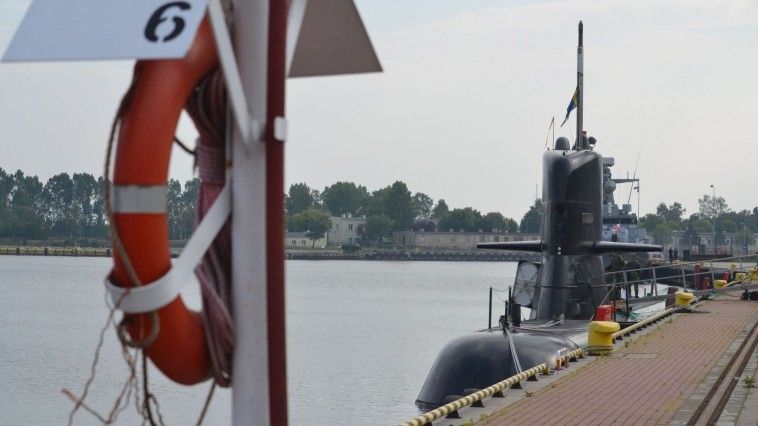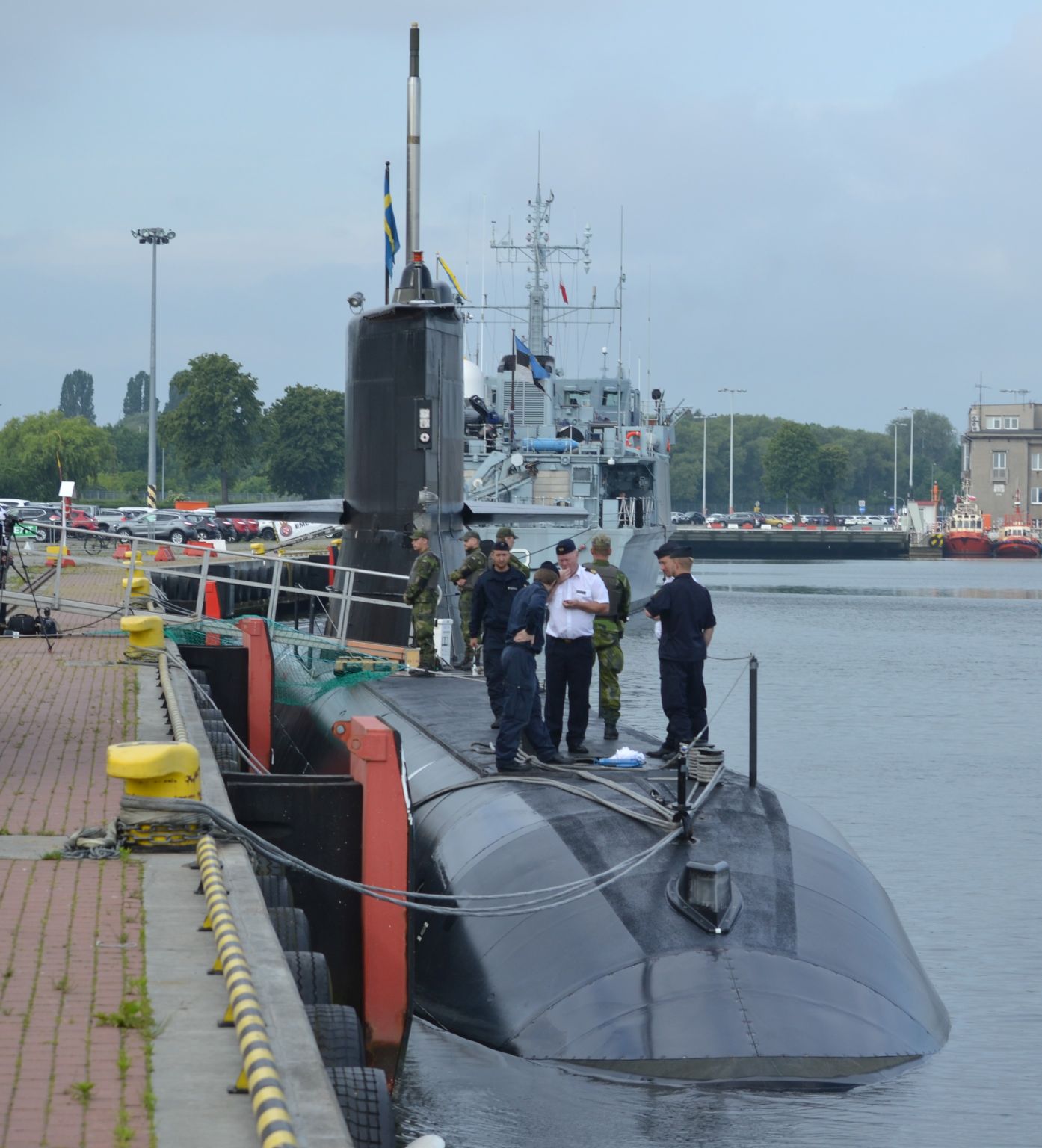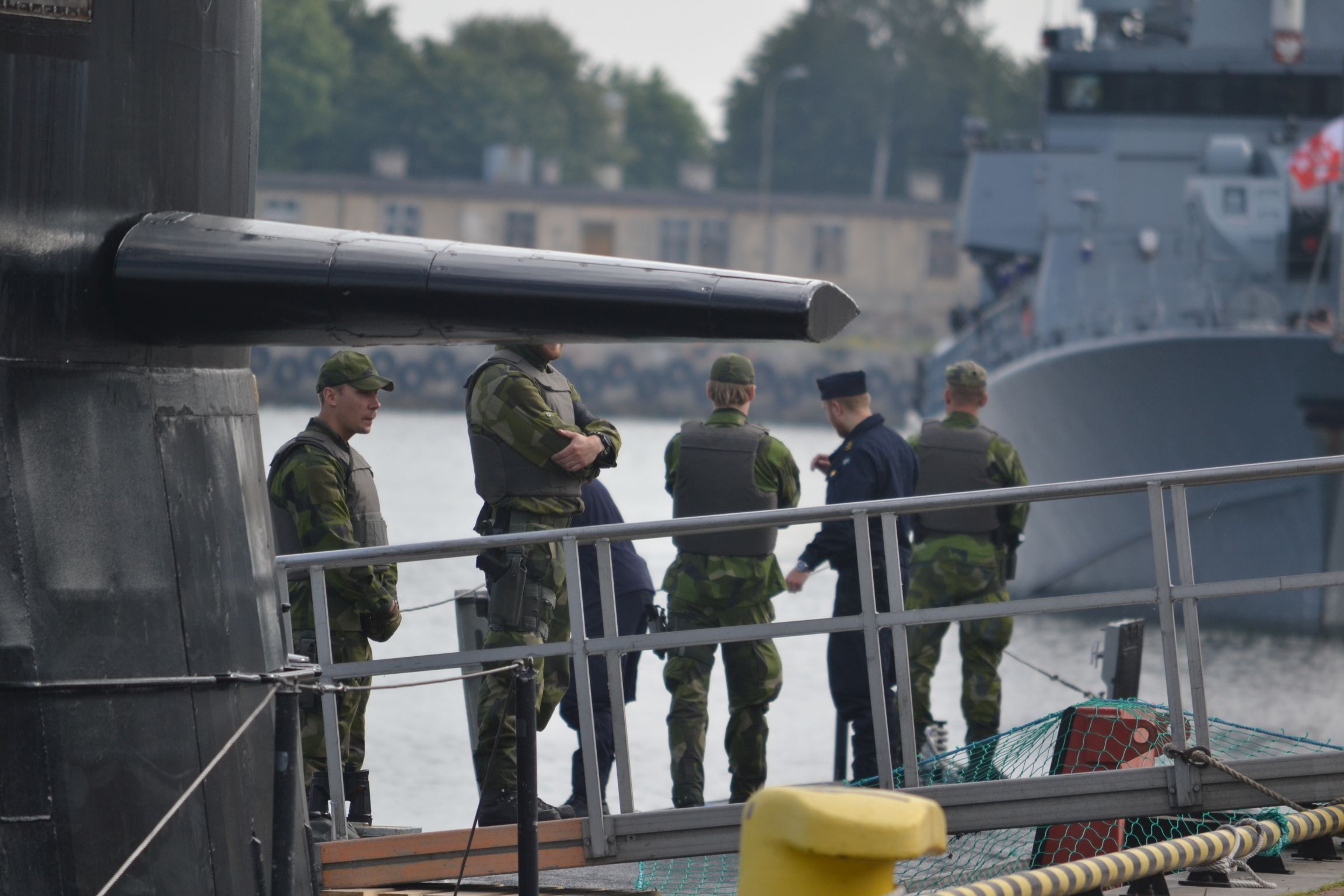Armed Forces
"Swedish FMS" and a gap-filler submarine for Polish Navy

Procurement of a gap-filler A17/Södermanland-class submarine for the Polish Navy from Sweden would create a necessity to delegate all overhaul-, upgrade- and maintenance-related tasks to the Swedish government. The Swedes would also need to organize the training for the Polish crew. The specific nature of procurement could match acquisitions of military equipment from the United States of America, in line with the FMS procedures.
There is a clear difference between the meaning of the term "gap filler solution for the Orka programme", as understood in Sweden and Poland. The Swedes assume that Poland is willing to procure both A17 submarines that the Swedish Navy owns (HMS "Södermanland" and HMS "Östergötland"), in line with the request that had been submitted by Warsaw previously. Meanwhile, in Poland, the voice that begins to come to the surface states that the Polish Ministry of Defence would only be interested in the procurement of a single A17, with the right of option concerning the second submarine.
Let us recall one of the responses to the questions submitted by the MPs, issued by Deputy Minister of Defence Wojciech Skurkiewicz, back in April 2020: “The ORKA programme aimed at the acquisition of new generation submarine is at the analytical-conceptual stage now. Furthermore, the task is being worked on, related to the acquisition of gap-filler submarines, namely seen as procurement of a single submarine from a foreign partner, with an option of extension to two submarines involved".
The Polish Ministry of Defence, when asked about this in early May by us, made the claims more specific: "Talks are in progress, with the Swedish side, on procurement of second-hand A17 submarines. The detailed provisions on the value of the agreement, quantity, and delivery dates, as well as the scope and method of modernization, crew training, and provision of support within the scope of logistics, would all be arranged during the negotiation".
A discrepancy between the two narratives emerges here, even though the Polish-Swedish intergovernmental dialogue on that matter has been going on for 9 months now (at least from August 2019). A lot of information on the Polish gap filler solution has been made public in Sweden, by the Parliament, and by the media. The information primarily suggests that the Swedish Försvarets materielverk (FMV) defence procurement body would be responsible for selling the A17s to the Polish Navy.
This means that we would be dealing with a “government to government” procedure. FMV would take over responsibility for all aspects of this convoluted transaction:
- the technical aspects (status assessment, maintenance works, upgrades);
- the logistics (provision of spares, maintenance, the potential transfer of technology and provision of expendables);
- the training (related to the training for the crews and the maintainers),
- the operational aspects (related to the employment of the submarine and its armament).
The solution proposed by the Swedes is plausible as it also creates a lot of benefits for the Polish MoD. The Poles would not have to carry out a negotiation with the Swedish administration, separate from the talks with the industry. This is important. FMV has much more experience in working with Saab Kockums than the Polish Armament Inspectorate does.

On the other hand, the Poles have acquired some habits in the US FMS system, and those habits could be viewed as unacceptable by the Swedes. If the Swedes adopted rules identical to the ones adopted by the US, this would give the Poles a chance to transfer more responsibility to the Swedish government, for the potentially dubious or problematic aspects of the deal, for instance, related to the age of the HMS „Södermanland" and HMS „Östergötland" vessels, or to the financial conditions that Saab Kockums is going to find itself in, during the term of agreement validity.
FMV would then be bearing the risk associated with delays of work undertaken by the Swedish shipyard. And if delays as such have been recorded in case of the new generation A26/Blekinge submarine already, then they could also occur in case of the legacy A17 vessels.
The challenges would grow for FMV, as it is more and more probable that Poland would procure only a single Södermanland-class submarine as a gap-filler, instead of two, as it was initially assumed.
Which of the A17s would Poland get?
Theoretically, the Polish Ministry of Defence could choose out of the two A17 vessels, as both are at the same age - they have been commissioned in 1989. The Södermanlands differ, however, when it comes to their condition. HMS „Södermanland" has been active until now. HMS „Östergötland", meanwhile, was decommissioned back in 2011, most probably. Since then it has been used as a source of spares for the second sub.
It may have seemed that HMS „Södermanland” is the obvious choice. However, the requirements in the Polish and Swedish Navy suggest otherwise. Due to the time required to carry out upgrades and the procedural framework and logic of crew training, it could turn out that the HMS „Östergötland” may be a better choice for the Polish Ministry of Defence, as a potential gap-filler. Only then the crew would stand a chance of getting training on a fully capable submarine: HMS „Södermanland”.
Furthermore, the Swedes would still follow their “White book on Sweden’s Security Policy and the Development of the Military Defence 2021-2025”. The 2021-2025 “White Book” clearly states that the “[t]he number of submarines will increase from the current four to five, through a mid-life upgrade and activation of the third Gotland class vessel.”
Doing an opposite thing and handing the sole capable A17 off to Poland (HMS "Södermanland") would mean that the number of submarines would no go up. It would go down to three until the first A26/Blekinge vessel is commissioned. This is planned to happen around 2023-2025. And such weakening of the Swedish naval potential would not be accepted by the Swedish Parliament, given the fact that Russian policy in the region is becoming more and more aggressive.

The Polish Navy would also suffer, should selection as such be made. No time would be saved, as both A17s would need to be upgraded at Saab Kockums, before handing off to the Polish Navy. The process could take 2.5 to 3 years. In the case of the HMS "Östergötland", the shipyard stage would be a bit longer (as the technical condition of the vessel would need to be restored, before any further upgrades). However, it could be transferred to Saab Kockums immediately after the contract is concluded. When it comes to HMS "Södermanland" the timeline could be shorter. However, in the case of this submarine, the decommissioning and transfer to the shipyard could be longer.
However, the most important matter that needs to be highlighted is the fact that if HMS “Östergötland” is selected, the Polish sailors could receive the training required, on HMS “Södermanland”. After the sea trials, the ex-Swedish submarine could be commissioned in the Polish Navy immediately. If HMS “Södermanland” is chosen, then the Polish sailors would have no training platform at their disposal during the overhaul that could take around 3 years. No personnel that could conduct the training would be available as well, as no full A17 crews would serve in the Swedish Navy. It would be unreasonable to keep a crew as such together, solely to meet the needs of the future Polish crew.
A17 for Poland - Price-tag?
The cost may be the only piece of the puzzle that could ruin the whole picture. The information suggesting that the Polish Navy wants to acquire only a single A17 could mean that the allocated budget is fairly limited. Meanwhile, if FMV assumes complete responsibility for preparing one of the submarines for Poland, then it would mean that norms and rules identical to the ones followed in the Swedish military shall be adopted. No space for compromise is available here, with a partial assignment of work to some shady businesses, delays in payment, and use of unproven replacement parts.
Modernizing the A17, to make it capable for another decade, the Swedes will do for Poland what they have not decided to do for themselves. The Swedish parliament was informed, not without reasons, that extending the HMS “Södermanland’s” lifecycle beyond 2021 would require a lot of money - this is the main reason why the submarine in question is planned to be withdrawn.
Meanwhile, not only would recovering the full capability of HMS "Östergötland" involve repairs, as the equipment on board would need to be retrofitted and restored. The problem stems from the fact that these elements have been removed as they are not available, at warehouses or in production. To make the vessel for Poland fully capable, these elements would need to be replaced with brand new solutions, certified for use on submarines within the scope of safety requirements. The cost of certification could be very high, especially if it is done in line with the strict, Swedish requirements. It could also be time-consuming.
Furthermore, one shall remember that the A17 submarine (that is more than 3 decades old) would serve as an effective gap-filler only if Poland gets access to spares required to operate the vessel for at least another decade. Otherwise, the ex-Swedish submarine would join the Polish vessels that are staying in the Gdynia harbour.
One could try to create a source of spares using HMS "Södermanland" that is expected to be withdrawn in two years. However, maintaining two submarines to make only one of them available could be detrimental for many reasons (including ones of political nature, or related to reputation). The spares prepared for the Singaporean Archer-class submarines (RSS "Archer" and RSS "Swordsman") could also be used here. What we do not know, however, is whether a clause as such is within a negotiable reach of the Polish MoD.
It is also difficult to estimate the FMV quote associated with the transfer of technology required to maintain the A17s domestically, in Poland. Should the Swedes take over the responsibility for maintaining the Polish submarines, we shall expect that no half-measures or risks would be acceptable here. Even though the Polish Ministry of Defence assumes that the domestic industry would be involved in the process of maintaining the A17s, it may turn out that the associated transfer of technology could be unaffordable. This would be especially pronounced in a situation in which the Polish MoD expresses willingness to procure only one of the Submarines. Awareness that any major repairs or periodic maintenance would be taking place in Sweden is key here. And this would significantly increase the A17 maintenance cost, creating a significant set of expenses in the budget of the Polish Navy.
On the other hand, though, the Polish MoD has no other choice - responsibility needs to be transferred to FMV, and Warsaw should trust the Swedish judgment here. The Polish Ministry of Defence has no experience whatsoever, in the process of taking over foreign vessels. For instance, most of the experts involved in the 2002-2003 "Kobben to Poland" programme are no longer serving in the military.
From the Polish point of view, the FMV agency shall act as the intermediary and as an advisory body in the relation with Saab Kockums, when it comes to technical and logistics-related aspects of the transfer. The Agency could also provide valuable advice when it comes to the justifiability of upgrades proposed by Saab Kockums. FMV may also supervise the process technically - this is another domain where Poland has no expertise whatsoever.
Should this be the case, the Swedish MoD would play a role, in the process of taking over a single or two A17 submarines by Poland, similar to the one played by the US Administration in the FMS procurement procedures. This would be justified, as the MoD of Poland has got used to procurement processes as such, with recent experience - so far, processes as such have been flawless in execution. On the other hand, Poland would pay a lot for this. The role of the Polish, domestic industry, meanwhile, would remain fairly limited here.
Furthermore, FMV would need to issue an approval, with regards to all of those conditions.
